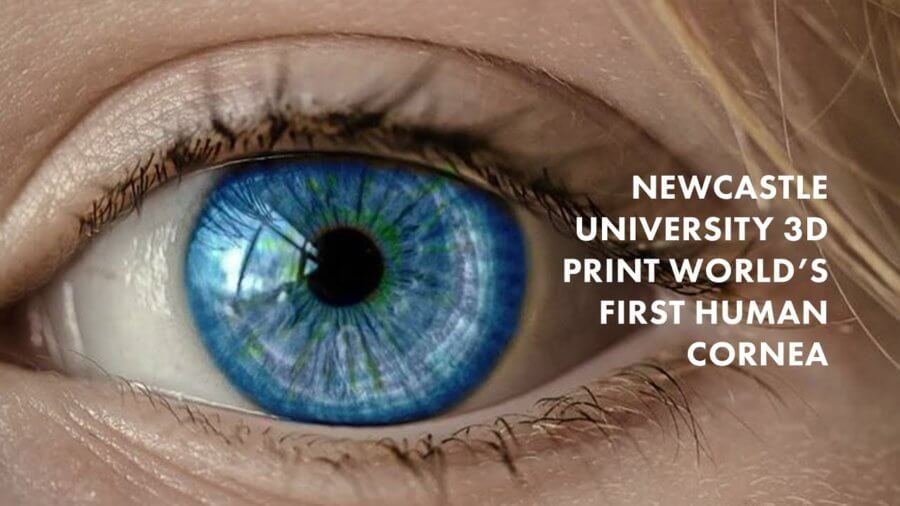UK researchers 3D print Human Corneas for the first time
UK researchers have developed 3D printed Human Corneas that can be put to great use in replacement surgeries.
UK researchers have successfully achieved 3D Printing of Human corneas. The mere reason behind this achievement lies in an entity discovered by researchers at Newcastle University. It is none other than a bio-ink, gel possessing constituents like alginate, polysaccharide derivative of seaweed, along with collagen, the protein forming whole structure of the Human Cornea.
This novel ink was able to fulfil the three necessary criterions for the generation of the human cornea. All the information was reported by Che, Connon, researcher, and professor at tissue engineering department of the university. The ink was able to render sustained life to the stem cells of the cornea.
The ink generates material which is neither too hard nor too soft. Hence, it facilitates the maintenance of structures in shape and can be taken out of the 3D Printer’s nozzle.
With such combination, the gel rendered life to the idea of having human 3D Cornea in existence. This discovery is an exclusive one and has been successful for the first time. The pictures that are taken from a man’s cornea can be rendered in a 3D display on a PC and after that can be reproduced in a dish utilizing a 3D-bioprinting framework.
This makes the human 3D cornea viable and usable in surgeries. Also, this venture is suitable for those with corneal blindness. Human 3D Cornea can be used to render the person with visual requirements and proper treatment. Corneal blindness is common due to burnt corneas, grave bacterial contaminations, and other reasons.
While numerous nations in the primary world have huge cornea banks for transplant patients, many in immature districts of the world don’t. Sadly, it’s as a rule in these spots where individuals require cornea substitutions the most. The advancement is good to go to help the immature nations in better eye substitution medical procedures.
Even in the countries which are developed enough, eye banks are viable and sufficient enough to keep up with the corneal demands due to certain factors. The population’s mortality rate has experienced a huge decline due to better medical facilities and also the refractory surgeries are more common. The researchers at the University have been dealing with corneal aspects for over decades now.
The scientists were working to develop human 3D cornea for quite a while now. Also, the material research for making this venture successful has been in progress for decades. After immense hard-work, the technique has finally been discovered for the betterment of people.
A specialist in medical procedure could have a 3D printer with the program and afterwards, reach up and take a printing gel from the rack and connect appropriately to the printer, isolating the wet and muddled generation of cells from the creation of printing, as told by Connon.
The technique does justice to the corneal blindness patients and is similar to another venture by one eminent Swiss pharmaceutical company, Novartis.
The company launched “FocalView” app which provides patients with a better guideline for their eye disease and its progression. Ophthalmic diseases can be controlled, diagnosed as well as treated with the use of this multi-purpose application.
Image credit: www.youtube.com

















